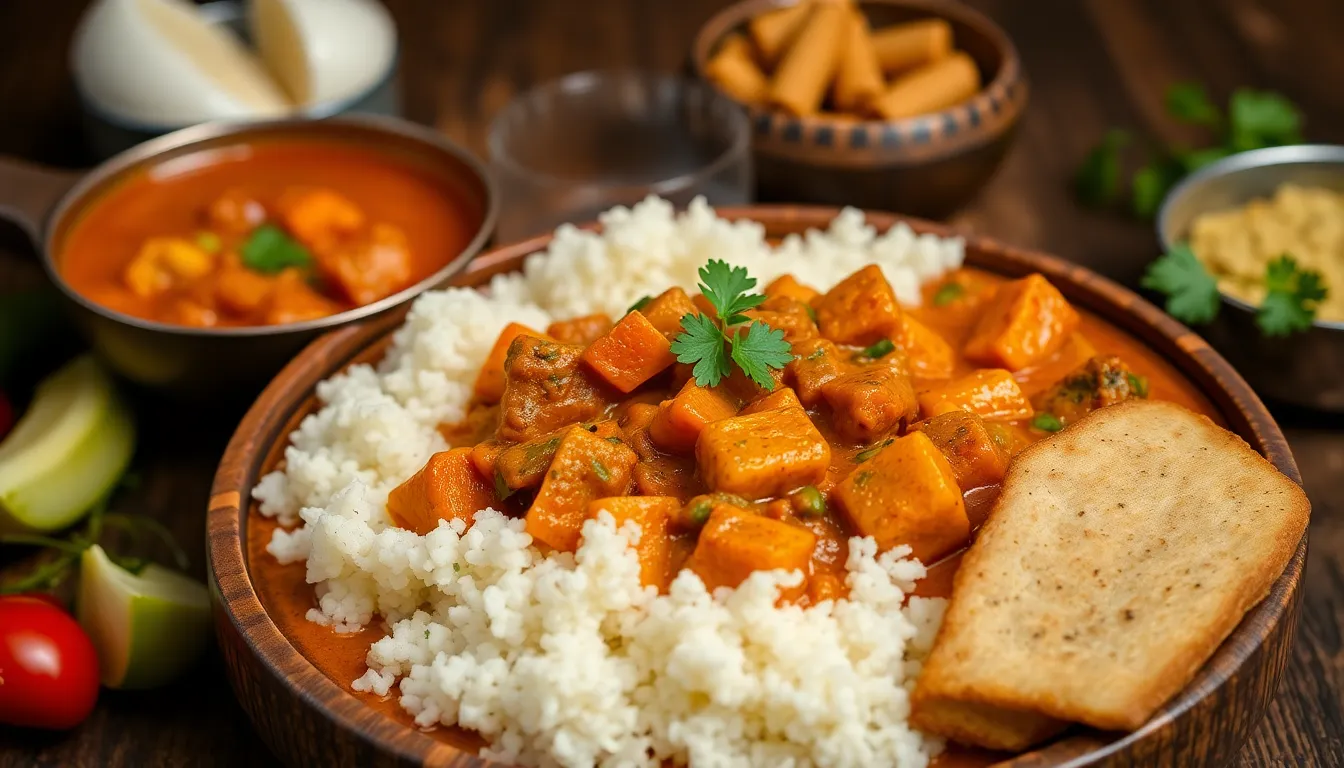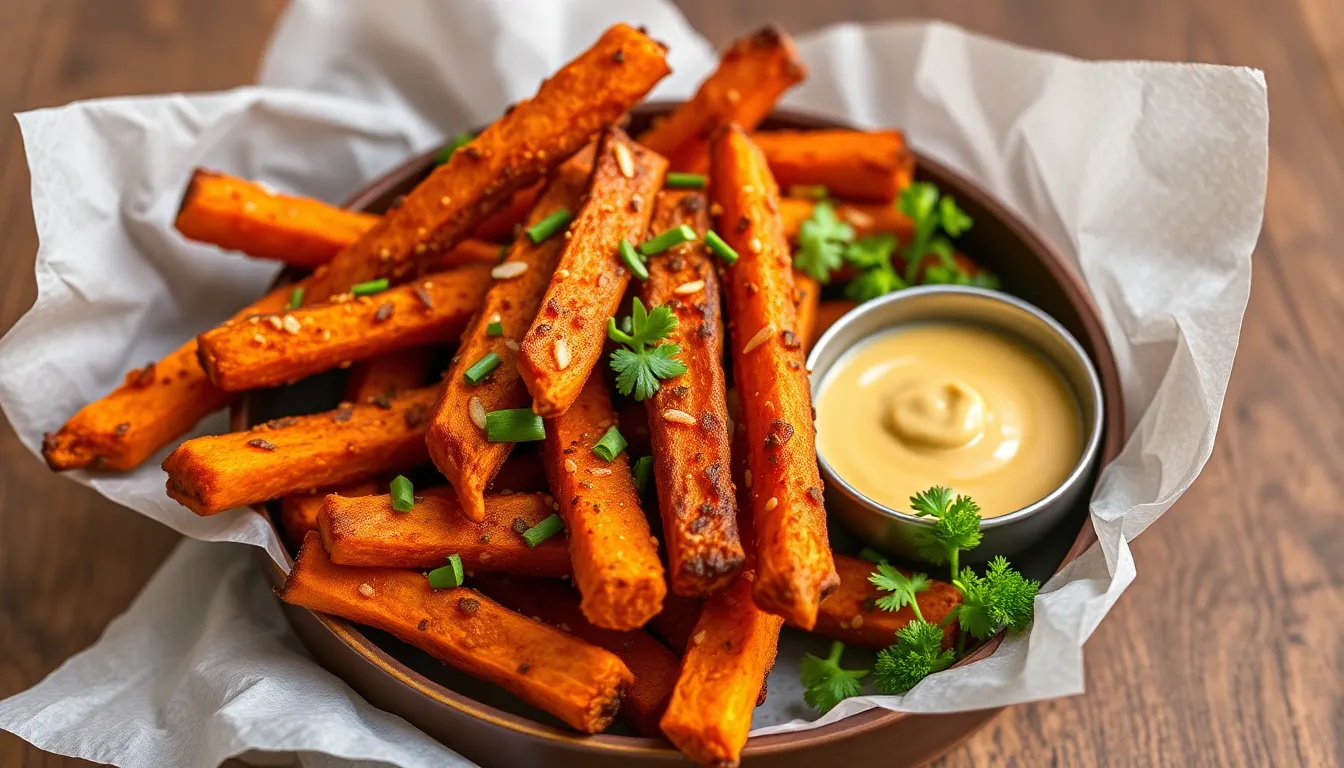Vegetable Curry Recipes to Spice Up Your Dinner
Introduction
Curry is a beloved dish found in various forms across countless cuisines around the globe, from the aromatic kitchens of India to the vibrant street food stalls of Thailand. Its rich, complex flavors and comforting warmth make it a favorite choice for many home cooks and restaurant-goers alike.
Incorporating vegetables into curry not only enhances the flavor but also contributes to a balanced and nutritious meal. With an array of earthy, spicy, and sweet notes, vegetable curries offer a delightful way to enjoy a healthy diet while exciting your palate.
In this article, you’ll learn how to create delicious vegetable curry recipes, understand the basic components that make up a great curry, and discover tips for customizing your dish according to your preferences and seasonal ingredients.
Section 1: Understanding the Basics of Vegetable Curry
At its core, a vegetable curry is a dish that combines a variety of vegetables cooked in a flavorful sauce, usually made with a blend of spices. Each cuisine has its own unique take on curry, which results in a delightful spectrum of flavors and presentations.
Common spices used in curries include:
- Cumin
- Coriander
- Turmeric
- Cardamom
- Chili powder
- Black mustard seeds
Diving deeper into the world of curry, you can find numerous variations such as:
- Indian Curry: Rich and aromatic, often based on a tomato or yogurt base.
- Thai Curry: Typically made with coconut milk and fresh herbs, such as basil and cilantro.
- Caribbean Curry: Infused with allspice and often includes fruits and root vegetables.
Section 2: Essential Ingredients for Vegetable Curry
Creating a mouth-watering vegetable curry requires a few essential ingredients. Here’s a list of staples you’ll want to have on hand:
- Fresh vegetables
- Onions
- Garlic
- Ginger
- Curry powder or paste
- Coconut milk or vegetable broth
HTML Table: Essential Ingredients for Vegetable Curry
| Ingredient | Description | Common Uses |
|---|---|---|
| Onions | Base for most curries | Sautéing, flavor building |
| Garlic | Adds depth and aroma | Marinades, sautéing |
| Ginger | Provides warmth and spice | Sautéing, pastes |
| Curry Powder | Spice blend for flavor | Main ingredient in curries |
| Coconut Milk | Creaminess and sweetness | Base for curries |
| Fresh Vegetables | Nutritional value and color | Main component of the dish |
Section 3: Quick and Easy Vegetable Curry Recipes
Recipe 1: Classic Chickpea Curry
Ingredients:
- 1 can chickpeas, drained and rinsed
- 1 onion, chopped
- 2 cloves garlic, minced
- 1 inch ginger, grated
- 1 can coconut milk
- 2 tablespoons curry powder
- 1 cup diced tomatoes (canned or fresh)
- Salt and pepper to taste
- Fresh cilantro for garnish
Preparation Instructions:
- In a large pot, heat some oil over medium heat. Add the onions and sauté until translucent.
- Add garlic and ginger and cook for another minute until fragrant.
- Stir in the curry powder and cook for a minute to toast the spices.
- Add the chickpeas, diced tomatoes, and coconut milk. Stir well.
- Bring to a simmer, reduce the heat, and let it cook for 20 minutes.
- Season with salt and pepper, and garnish with fresh cilantro before serving.
Tips for Enhancing Flavor: Add a splash of lime juice before serving for a zesty finish.
Recipe 2: Thai Green Curry with Mixed Vegetables
Ingredients:
- 1 cup mixed vegetables (bell peppers, zucchini, broccoli)
- 1 can coconut milk
- 2 tablespoons green curry paste
- 1 tablespoon soy sauce
- 1 tablespoon olive oil
- Fresh basil leaves for garnish
Preparation Instructions:
- In a pan, heat olive oil over medium heat. Add the green curry paste and sauté for 2 minutes.
- Add the mixed vegetables and stir to coat with the paste.
- Pour in the coconut milk and soy sauce, and bring to a simmer.
- Cook for 10-15 minutes, until vegetables are tender.
- Garnish with fresh basil leaves and serve with jasmine rice.
Suggestions for Serving: Serve with jasmine rice and a side of spring rolls for a complete meal.
Recipe 3: Spicy Cauliflower and Potato Curry
Ingredients:
- 1 head cauliflower, cut into florets
- 2 potatoes, cubed
- 1 onion, chopped
- 2 cloves garlic, minced
- 1 inch ginger, grated
- 2 tablespoons curry powder
- 1 can diced tomatoes
- 1 cup vegetable broth
- Salt to taste
Preparation Instructions:
- In a large pot, sauté the onions, garlic, and ginger until soft.
- Add the curry powder and cook for another minute.
- Stir in the cauliflower, potatoes, diced tomatoes, and vegetable broth.
- Bring to a boil, then reduce heat and simmer for 25 minutes or until the vegetables are tender.
- Season with salt and serve with rice or naan.
Pairing Recommendations: This curry pairs well with a side of naan and a refreshing cucumber salad.
Section 4: Customizing Your Curry
One of the best aspects of cooking curries is the flexibility to adjust ingredients based on your taste and seasonal availability. Here are some suggestions:
- Swapping Vegetables: Feel free to replace standard vegetables with seasonal ones. Try butternut squash in the fall or asparagus in the spring.
- Adding Proteins: Enhance your curry by incorporating proteins such as tofu, tempeh, or chickpeas to increase the nutritional content.
- Adjusting Spice Levels: If you prefer a milder curry, reduce the amount of chili powder or add a dollop of yogurt or cream before serving.
Section 5: Serving Suggestions
To make your vegetable curry dinner even more delightful, consider these serving suggestions:
- Side Dishes: Serve your curry with fluffy basmati rice, warm naan, or a light salad.
- Creative Presentation: Use a deep bowl to serve the curry, sprinkle fresh herbs on top, and surround it with colorful sides to create a visually appealing plate.
- Garnish Ideas: Top with toasted nuts, seeds, or a sprinkle of fresh lime juice for added flavor.
Section 6: Storing and Reheating Leftovers
Leftover curry can be just as delicious as the first serving if stored and reheated properly:
- Storing: Allow the curry to cool before placing it in an airtight container. It can be kept in the refrigerator for up to 4 days or frozen for up to 3 months.
- Reheating: Reheat on the stovetop over low heat, stirring occasionally. Add a splash of water or coconut milk if it seems too thick.
Conclusion
Cooking vegetable curry is a rewarding experience that not only tantalizes your taste buds but also supports a healthier lifestyle through the incorporation of fresh vegetables. With endless possibilities for customization, every cook can create a unique version that suits their tastes.
We encourage you to experiment with these recipes and share your own variations or favorite vegetable curry recipes in the comments below!
Additional Resources
- Explore our spice guide for more on spices used in curries.
- Check out our rice dishes to pair with your curry.
- Discover more delicious curry recipes from various cuisines.




